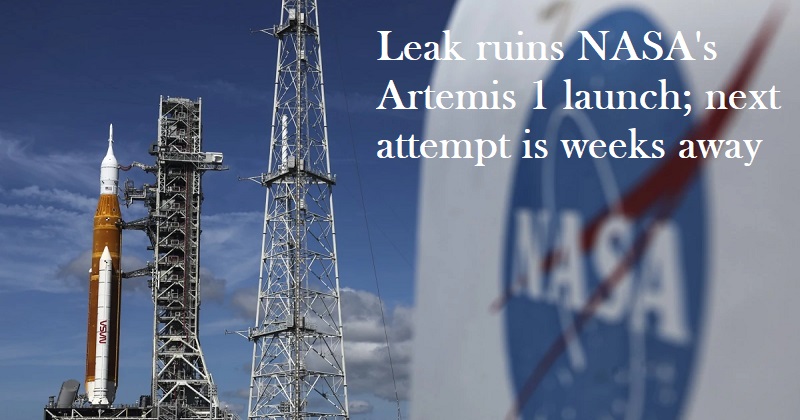
After NASA’s new moon rocket suffered another hazardous fuel leak on Saturday, the second attempt this week to launch a crew capsule into lunar orbit with test dummies had to be aborted. Since the first flight, weeks, if not months, have passed. Although minor, hydrogen leaks hampered an earlier attempt on Monday to launch NASA’s most powerful rocket, the Space Launch System. Leaks discovered earlier this year during countdown drills were also discovered.
According to mission managers, the rocket was moved off the launch pad and into the hangar for additional repairs and system updates following the most recent failure. Beforehand, some maintenance and testing may be performed at the pad. The rocket is currently grounded until late September or early October due to a two-week launch ban. NASA will accommodate a high-priority SpaceX astronaut voyage to the International Space Station scheduled for early October.
On a test mission like this, where everyone wants to validate the rocket’s systems ‘before we send four humans up on top of it,’ NASA Administrator Bill Nelson emphasized that safety is the top priority. ‘ Just remember: We’re not going to launch until everything is perfect,’ he said. NASA has been waiting for years to orbit the moon in a crew capsule atop a rocket. If the six-week demonstration is successful, astronauts could fly around the moon in 2024 and land in 2025. The last lunar landing was 50 years ago.
At dawn, the Space Launch System rocket was just starting to fill with nearly 1 million gallons of fuel when a large leak in the bottom engine section appeared. Charlie Blackwell-Thompson, the launch director, and her team had only just begun this process. Ground controllers attempted to stop it by stopping and restarting the flow of extremely cold liquid hydrogen in an attempt to close the breach around a supply line seal, as they had done with previous, smaller leaks. They tried it twice and also flushed helium through the line. But the leak persisted.
Several small hydrogen leaks appeared on the rocket during Monday’s attempt. Technicians tightened the fittings over the next few days, but Blackwell-Thompson stressed that she wouldn’t know if everything was tight until Saturday’s fueling. Hydrogen molecules can escape through the smallest crack or opening due to their extreme small size—the smallest in the universe. Hydrogen leaks were a common issue with NASA’s space shuttles, which are no longer in service. The same main engines power the new moon rocket.
It became an even bigger problem on Monday when a sensor reported that one of the rocket’s four engines was too warm, even though experts later confirmed that it was actually cool enough. This time, the launch team would disregard the bad sensor and use other equipment to ensure that each main engine was properly chilled. But the countdown was never that long. Thousands of people flocked to the shore during the long Labor Day weekend to witness the Space Launch System rocket launch.

Post Your Comments